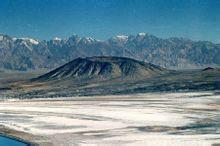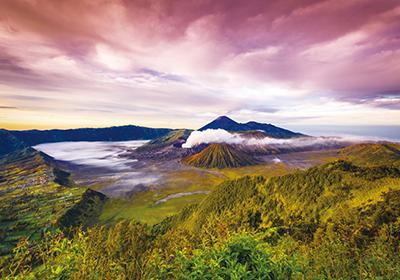Ashkule volcano, Xinjiang
Ashkule Volcano Group are located in the West Kunlun Mountains, about 120 km south of Yutian County, Xinjiang, on the northwest margin of the Qinghai-Tibet Plateau, which consists of more than 10 main volcanoes and dozens of sub-volcanoes, including Western Hills, Ash Mountain, Dahei Mountain, Uruke Mountain, Labyrinth Mountain, Crescent Mountain, Yak Mountain, Heilong Mountain, Horseshoe Hill, Dong Mountain and Chair Mountain. Almost all of these volcanoes are central eruptions, forming conical or truncated conical cones, most were formed in the Quaternary Period, the latest eruption was Ash volcano on May 27, 1951.

The volcano of Datun and Gusan island on Taiwan Island
Datun volcanic group and Gusan Island volcanoes are located in the northwest and east seas of Taiwan Island respectively. Datun volcanic group consist of more than 20 volcanoes of different sizes. Volcanic activities began at 2.8〜2.5 Ma ago, and the latest eruption occurred at about 0.2〜0.1 Ma ago, however, the current hydrothermal activity and seismicity make us worry about the possible re-eruption of volcanoes. Microseismic activity is frequent near the Datun volcanic area, especially in the Manger area, where the magnitude is usually less than 3.0. In 1986, a magnitude above 5 earthquake occurred in Bamboo-Lake area of Yangming Mountain, which may be the direct cause of massive landslides and mudslides in Manger area after the earthquake. The Datun volcano is similar to the Yellowstone Park volcano in the western United States, which erupted 150,000〜75,000 years ago. According to the existing definition, Datun volcano and Huangshi Park volcano are both "dead" volcanoes, but they have strong surface and underground activity, similar to the vast majority of active volcanoes in the world, and are considered to be likely to reignite as active volcanoes.

The Gusan Island volcano, located at the western edge of the Ryukyu volcanic island arc, about 20km northeast of Yilan in the north of Taiwan Island, is mainly composed of andesitic volcanic rocks. The volcanic terrain on the island is quite intact, and the volcanic activity of sulfur jets and hot springs are quite intense. The collected lower andesite breccia contains captured quartz sandstone blocks, quartz was dated about 7000 years ago by thermoluminescence, indicating that the eruption date of andesite was about 7000 years ago, because of the distribution of lava flow over the volcanic breccia, the latest eruption of the volcano in Guishan Island may be less than 7000 years.
Northern Hainan Volcano
Leiqiong area is the largest area of Cenozoic volcanic rocks along the coast of South China, volcanic activities began in the the Early Paleogene and continued to the Holocene. The area of volcanic rocks is 7300 km² with a total of 177 identifiable craters, the altitude is lower than 300m. More than 30 volcanic craters of Shishan and Yongxing area in Quaternary volcanic area of northern Hainan Island (north of Hainan Island) are obviously arranged in a northwest direction, forming a typical central volcanic group, which is the latest volcano in north of Hainan.
Comment list ( 0 )
